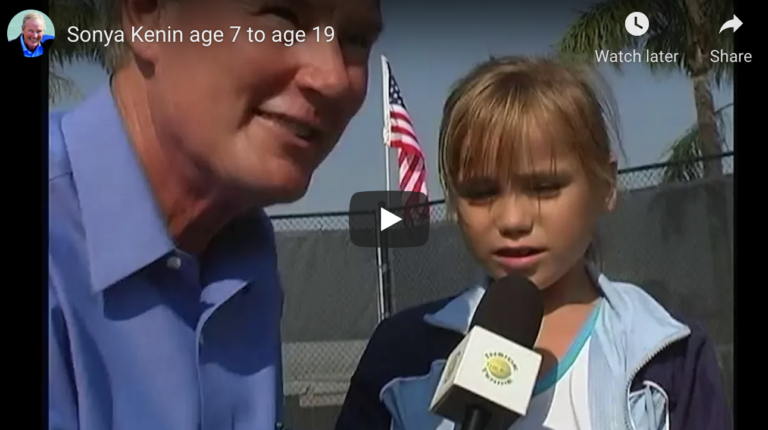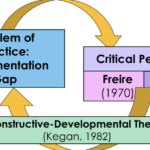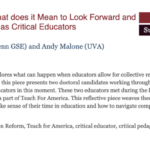I’m a huge tennis fan. During one of my recent meanderings through Youtube clips (best tennis rallies… Serena Williams championship points… Borg-McEnroe tiebreak, complete), I came across an old interview with a seven-year-old Sofia Kenin, this year’s Australian Open champion.
As the interview starts, the reporter’s mic seems large and clunky against Kenin’s cherubic face. She squints, maybe at the bright Florida sky, maybe at her unkempt bangs. She seems shy and a bit overwhelmed, but steadies herself and answers each question, as if she is striking forehands from the baseline. We learn that Kenin wants to be number one in the world; that she practices three hours a day; that she takes a drink when she gets a little tired.
We also learn that her favorite pro is Andy Roddick, who she knows because “she saw [him] standing over there when he was serving.” Endearing childhood logic.
So far, a pretty routine conversation. But the next exchange shocks me:
Reporter: Would you like to play with Andy Roddick someday?
Kenin: Yeah.
Reporter: Do you think you could ever return Andy Roddick’s serve?
Kenin: Yes.
Reporter: How?
If I split and I prepare early and I do a short backswing. — SOFIA KENIN, AGE 7
PLAN FOR RETURNING ANDY RODDICK’S SERVE
For me, young Kenin’s words linger; I’m stunned.
It’s not her confidence that surprises me. Most seven-year-olds holding a tennis racket easily visualize themselves contending with the pros. Seven-year-olds are great that way.
What surprises me is Kenin’s specificity. I expect Kenin’s response to be broad, aspirational. Maybe: I’ll practice a lot or I’ll hit extra hard. Maybe some good-but-hackneyed sports adage, like: I’ll keep my eyes on the ball.
But young Kenin’s confidence is anything but broad. In fact, it’s searingly concrete. Without missing a beat, Kenin describes the three incisive, laser-sharp actions she will take to address a Roddick bomb: (1) split, (2) prepare early, (3) shorten backswing.
Kenin’s words shock me not as a tennis player; the advice is familiar. Her words shock me as an educator. My mind leaps from the court to the classroom; to the language we use with students.
Most of us would readily list “specificity” as a criterion for strong feedback. But, in my experience, vague language persists in schools. Whether motivational (Do your best! Work hard!) or instructional (Choose the best evidence! Make sure your answer is reasonable!), our messages to students are often too broad. It’s clear to me that Kenin’s coaches, by contrast, equipped her with a specificity of language – and by extension, a specificity of vision – for her desired performance.
In a learner-centered spirit, something else stands out about Kenin’s interview: her internalization and ownership of the specific instruction she has received. For educators, being precise in our language does not mean that we need to be directive or top-down. It does mean, that when discussing ideas and work products, we should push ourselves to be exacting with our words; and that we should expect and support our students to be exacting with theirs.
We don’t always need to tell kids what their three next steps should be. But, when we ask students to speak, think, write, or reflect, we ought listen to whether their takeaways rival young Kenin’s compelling clarity.
Sometimes, we forget about obvious best practices. For me, watching Kenin’s interview awoke me to my own forgetfulness. I’m grateful to have heard this young phenom’s crystalline, three-step game plan for attacking Roddick’s serve. Her words helped me realize just how accustomed I have become to general language and feedback at school. Now, in a split step of my own, I feel energized and committed to work alongside students and teachers as we tackle the vague and embrace the specific.
I might have ended this piece here – if Kenin’s words were not fresh in my mind. But, in an attempt to rival her specificity, here are three next steps I’m going to take:
- During lesson observations, keep a running list of phrases that stand out to me as vague (both teacher language and student responses). During debriefs with teachers, share these phrases and collaboratively revise them to generate more specific ideas / messages.
- During lesson planning meetings, select a few “key moments” for the lesson to come. Predict what vague language (again, teacher or student) might sound like at those key moments. Then, draft more specific ideas and messages.
- Encourage teachers to share with students that specific language is a classroom value, expectation, and goal. Create anchor charts with examples of vague vs. specific language, as well as prompts for encouraging others to revise for specificity. Celebrate students who prompt others to clarify / sharpen their language.
Now, I’m feeling ready. Game on.



